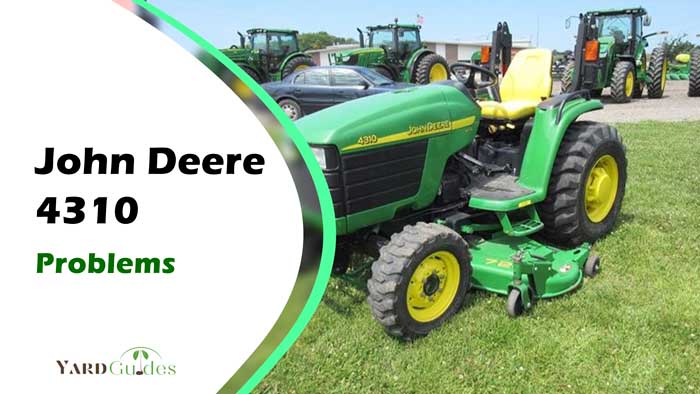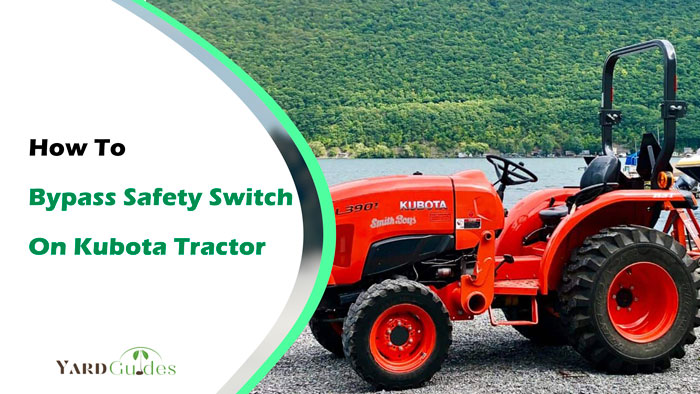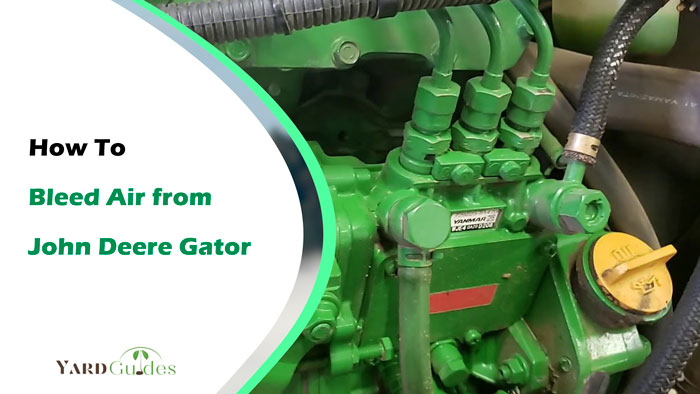While the John Deere 4310 is a reliable machine, it can develop some issues while in service. It’s necessary to understand these issues and how to address them so they can run smoothly and efficiently for years to come.
So, what are the most typical john deere 4310 problems that occur? The issues include the following.
- Hydraulic problems
- Electrical issues
- Transmission problems
- Fuel system problems
- Engine problems
In this blog post, we will delve more into some of the most common problems that owners may encounter with their John Deere 4310 tractors. And provide tips on how to troubleshoot and fix them.
Overview Of John Deere 4310 Problems and Quick Solutions
The table below highlights some of the common issues that other owners have reported and what you can do to fix them quickly.
| No. | Problems | Solutions |
| 1 | Hydraulic problem | Ensure that the hydraulic fluid level is at the appropriate level |
| Replace any damaged parts | ||
| Drain the old hydraulic fluid and replace it with new, clean fluid | ||
| Bleed it by opening the bleed valve until all the air is expelled | ||
| 2 | Electrical issues | Replace and tighten corroded or loose connections |
| Replace a worn-out alternator | ||
| Charge or replace a dead or weak battery | ||
| Reduce the load on overloaded circuits | ||
| Repair or replace malfunctioning sensors or gauges | ||
| Replace a failed ignition switch | ||
| 3 | Transmission problems | Ensure the fluid level is at the recommended point |
| Replace the Clutch | ||
| Repair or Replace damaged gears | ||
| Replace Faulty Solenoid | ||
| 4 | Fuel system problems | Replace the fuel filter with new ones |
| Replace the fuel pump with a new one | ||
| Clean or replace fuel injectors | ||
| Repair or replace the rusted tank | ||
| 5 | Engine problems | Replace spark plugs |
| Repair or replace the fuel pump | ||
| Clean out any debris and replace a damaged air filter | ||
| Allow it to cool down before investigating the cause of the overheating | ||
| Replace the fuel filter with a new one |
Problems, Causes, And Solutions For John Deere 4310
Below is a detailed explanation of the problems and the best approach to solving each of the problems.
1. Hydraulic Problems
The hydraulic system is an essential component of the 4310, responsible for powering the machine’s lift and steering functions. Common hydraulic problems may include slow or weak lifts, hydraulic leaks, and difficulty steering. Common Causes of Hydraulic Problems are
- Low hydraulic fluid levels
- Worn hydraulic parts
- Contaminated hydraulic fluid
- Air in the hydraulic system
Solutions
Here are some solutions to hydraulic problems in the John Deere 4310:
- For low hydraulic fluid levels. Ensure that the hydraulic fluid level is at the appropriate level. If not, add the necessary amount of hydraulic fluid.
- For Worn hydraulic parts. Inspect the hoses, fittings, and seals for any signs of wear and tear. Replace any damaged parts.
- For Air in the hydraulic system. You can bleed it by opening the bleed valve until all the air is expelled.
- For Contaminated hydraulic fluid. Ensure that the filters are clean and replace them if necessary. Drain the old hydraulic fluid and replace it with new, clean fluid.
2. Electrical Issues
Like any other machinery, John Deere 4310 is prone to electrical issues that can cause major problems if left unaddressed. Symptoms of electrical problems may include dim or flickering lights or intermittent power loss. The most common causes of these issues are:
- Corroded or loose connections
- Worn-out alternator
- A dead or weak battery
- Damaged wiring harnesses
- Faulty fuses or relays
- Failed ignition switch
- Overloaded circuits
- Malfunctioning sensors or gauges
Solutions
Here are some solutions to common electrical problems:
- For Corroded or loose connections. Replace, clean, and tighten corroded or loose connections.
- For Worn-out alternators or generators. Replace a worn-out alternator or generator.
- For dead or weak batteries. Charge or replace a dead or weak battery.
- For damaged wiring harnesses. Repair or replace damaged wiring harnesses.
- For Faulty fuses or relays. Replace faulty fuses or relays.
- Failed ignition switch. Replace or repair a failed ignition switch.
- For Overloaded circuits. Reduce the load on overloaded circuits.
- For Malfunctioning sensors and gauges. Repair or replace malfunctioning sensors or gauges.
3. Transmission Problems
Transmission problems are always troublesome because you’ll encounter issues like difficulty shifting gears, slipping gears, or noisy transmission operation. These issues are a result of
- Low Fluid Levels
- Worn-out Clutch
- Damaged Gear
- Faulty Solenoid
Solutions
Check out every part carefully to determine the appropriate solution for it.
- For Low Fluid Levels. Regular checking and maintaining fluid levels can help prevent transmission problems. Ensure that the transmission fluid is clean and at the right level.
- For Worn-out Clutch. Replace the Clutch to restore power to the transmission.
- For Damaged gears. Repair or Replace Damaged Gears. It is essential to address this issue as soon as possible to prevent further damage to the transmission.
- For faulty solenoid. Replace faulty Solenoid to allow the transmission and gears to shift properly.
4. Fuel System Problems
The fuel system is responsible for delivering fuel to the engine, and common problems may include difficulty starting the engine, poor engine performance, or rough idling. Some of the most common causes of the fuel system include
Causes
- Dirty or clogged fuel filters
- Contaminated fuel or water in the fuel system
- Air leaks in the fuel system
- Malfunctioning fuel injectors
- Fuel pump failure
- Fuel tank issues, such as rust or debris accumulation
Solution
There are several actions you can take to fix fuel system problems in a John Deere 4310:
- For dirty or clogged filters. Replace the filter with new ones to improve fuel flow and performance.
- For Contaminated fuel or water in the fuel system. Drain the fuel tank and refill it with clean fuel.
- For Air leaks in the fuel system. Inspect your fuel lines, connections, and fittings for air leaks and replace any damaged components.
- For Malfunctioning fuel injectors. Clean or replace fuel injectors with the help of professionals
- For Fuel pump failure. Replace the fuel pump with a new one to ensure proper fuel flow and pressure.
- For Fuel tank issues. Check your fuel tank for rust, debris, or damage. Ensure to clean up your fuel tank properly. Also, repair or replace a damaged tank.
5. Engine Problems
The engine is one of the commonest problems of the JD 4310. Common engine problems may include excessive smoke or emissions, poor engine performance, or engine overheating.
If you hear unusual noises, such as knocking or clicking sounds, that may also be a sign of engine problems. There are several potential causes of engine problems in the John Deere 4310. They include:
- A clogged air filter
- A dirty fuel filter
- A malfunctioning fuel pump
- Overheating
Solutions
The solutions will depend on the specific issue you’re experiencing. Let’s consider these solutions below.
- For a clogged air filter. Simply replace the filter and clean out any debris that may be blocking the intake.
- For dirty fuel filters. Clean properly or replace the fuel filter with a new one if necessary, to restore proper fuel flow.
- For a malfunctioning fuel pump. Repair or replace the fuel pump and this is best done by a qualified mechanic.
- For the ignition system. Replace the spark plugs, ignition coils, or other components.
- For Overheating. You should stop using the tractor immediately and allow it to cool down before investigating the cause of the overheating.
Final Words
Hopefully, I believe by now that you’ve seen the common problems associated with the John Deere 4310. However, JD 4310 is a reliable and durable tractor, but like any machine, it can experience problems from time to time.
If you’re experiencing any of the issues outlined above, it’s important to address them promptly to prevent further damage and ensure the longevity of your tractor. By inspecting and maintaining the hydraulic system, electrical, transmission, and fuel system, you can keep it running smoothly for years to come.



